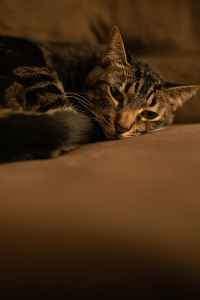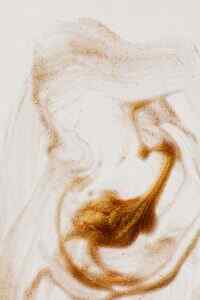The Enduring Bond: Dogs in Medieval Society
Step into the enchanting world of medieval Europe, where dogs played a multifaceted role, mirroring the intricate tapestry of social hierarchy and evolving attitudes. From the grand castles to the bustling streets, canines held diverse positions, ranging from skilled hunters and loyal companions to beloved indoor lapdogs.
I. The Role of Dogs in Medieval Society: A Reflection of Social Hierarchy and Changing Attitudes
In the medieval era, dogs’ roles extended far beyond mere companionship. They were indispensable partners in various aspects of life, their presence deeply intertwined with the social fabric.
A. Specialized Hunting Dogs:
Dogs’ exceptional hunting abilities made them invaluable assets in the medieval world, where hunting was both a necessity and a noble pastime.
1. Greyhounds:
Renowned for their lightning speed and agility, greyhounds were the prized companions of aristocratic hunters. Their sleek bodies and keen eyesight allowed them to swiftly chase and capture prey, making them indispensable in the pursuit of hares and deer.
2. Bloodhounds:
With their powerful sense of smell and unwavering determination, bloodhounds excelled at tracking quarries through challenging terrains. Their ability to follow scent trails made them essential for hunting large game, such as wild boars and stags.
B. Working Dogs:
Beyond hunting, dogs performed a wide range of tasks, contributing to the daily lives of medieval people.
1. Street Performers:
In bustling medieval towns and cities, street performers delighted crowds with their acrobatic tricks and displays of agility. These talented dogs, often accompanied by their human companions, showcased their skills to earn coins and entertain the masses.
2. Turnspits:
In kitchens across the realm, turnspits played a crucial role in preparing feasts. These hardworking dogs tirelessly operated wheels that rotated roasting meat, ensuring it cooked evenly. Their tireless efforts kept the kitchens humming and the tables laden with succulent dishes.
C. The Changing Role of Dogs:
As medieval society evolved, so too did the role of dogs. Once primarily utilitarian, they gradually gained recognition as cherished companions and status symbols.
1. Hunting as an aristocratic pastime: Dogs as status symbols for the elite.
Hunting emerged as a defining pastime for the medieval aristocracy, and dogs became integral to this pursuit. Owning and training specialized hunting dogs signaled wealth, power, and social standing. Dogs were not merely tools; they were symbols of status and prestige.
2. Welcomed inside noble homes, especially by women: Dogs as companions and indicators of social rank.
Dogs began to find a place within the confines of noble homes, particularly in the chambers of women. These delicate and often decorative dogs served as companions, providing comfort and entertainment to their mistresses. Their presence denoted refinement and social rank, reinforcing the status of their owners.
D. Indoor Lapdogs:
A new trend emerged among the medieval elite: the rise of indoor lapdogs. These small,精致的, and pretty dogs were highly prized possessions, symbolizing wealth and luxury.
1. Delicate, neat, and pretty dogs: Associated with the noble classes.
Lapdogs were a testament to the refined tastes of the nobility. Their delicate features, meticulous grooming, and playful nature made them coveted companions. Owning a lapdog became a symbol of elegance and sophistication.
2. Smaller dogs: Favored for their ability to provoke pleasure.
The smaller size of lapdogs made them ideal for cuddling and pampering. Their playful antics and affectionate nature brought joy and entertainment to their owners, providing a welcome respite from the often harsh realities of medieval life.
E. The Church’s View on Pets:
While dogs held a significant place in medieval society, the Church’s stance towards pets was not always favorable.
1. Formal disapproval of pets: Concerns about interfering with religious pursuits.
The Church formally disapproved of keeping pets, fearing they could distract from religious devotion and lead to idleness. Pets were seen as potential obstacles to spiritual pursuits, and their presence in churches was strictly prohibited.
2. Clerics owning lapdogs: Dogs as suitable companions for indoor activities.
Despite the official stance, some clerics privately kept lapdogs as companions. These small dogs were considered suitable indoor pets, providing comfort and companionship without interfering with religious duties.
II. Ambivalent Attitudes Towards Dogs: From Scavengers to Loyal Companions
Medieval attitudes towards dogs were complex and often contradictory. While they were valued for their practical skills and companionship, they were also viewed with suspicion and disdain.
A. Negative Perceptions:
Dogs were often seen as filthy scavengers, a perception reinforced by biblical passages that associated them with impurity and uncleanliness.
1. Dogs as filthy scavengers: Reflected in biblical passages.
Biblical texts, such as the Book of Leviticus, depicted dogs as unclean animals, reinforcing the negative perception of dogs as scavengers and carriers of disease.
2. Violent popular entertainments: Boar, bear, and bull-baiting involving dogs.
Dogs were also involved in violent popular entertainments, such as boar, bear, and bull-baiting. These spectacles, which often resulted in the dogs’ injury or death, reflected the ambivalent attitudes towards these animals.
B. Positive Portrayals:
Despite the negative perceptions, dogs were also depicted in a positive light, highlighting their loyalty, devotion, and intelligence.
1. St Roch’s dog: Carrying bread to a starving saint and healing his wounds.
The legend of St Roch, a 14th-century saint, tells of his faithful dog, who brought him bread while he was imprisoned and miraculously healed his wounds. This story exemplifies the positive portrayal of dogs as loyal and compassionate creatures.
2. Classical and medieval literature: Dogs defending owners and lamenting their deaths.
Classical and medieval literature is replete with stories of dogs defending their owners, lamenting their deaths, and exhibiting remarkable intelligence. These tales showcase the positive aspects of dogs’ character and challenge the negative stereotypes associated with them.
C. The Legendary Guinefort:
The story of Guinefort, a greyhound falsely accused of killing an infant, exemplifies the ambivalent attitudes towards dogs in medieval society.
1. A greyhound falsely accused of killing an infant.
Guinefort, a beloved greyhound, was unjustly accused of killing a baby left in his care. His owner, fearing for his dog’s life, fled with Guinefort to the forest.
2. Veneration and alleged healing miracles after the child’s safety was revealed.
When the child was later found alive and well, Guinefort was hailed as a hero and became the object of veneration. People attributed healing miracles to the dog, further cementing his legendary status.
D. Medieval Bestiaries:
Medieval bestiaries, collections of moralizing stories about animals, often featured dogs, highlighting their positive qualities.
1. Stories highlighting dogs’ intelligence, loyalty, and devotion.
Bestiaries contained stories that emphasized dogs’ intelligence, loyalty, and devotion to their owners. These stories served as moral lessons, teaching readers about the virtues of faithfulness and companionship.
2. King Garamantes’ faithful dogs rescuing him from capture.
One such story tells of King Garamantes, who was captured by his enemies. His faithful dogs, refusing to abandon their master, dug a tunnel under the enemy camp and rescued him, demonstrating their unwavering loyalty.
3. A dog identifying and attacking its master’s murderer.
Another story recounts a dog that recognized and attacked its master’s murderer, leading to the criminal’s capture and punishment. This tale highlights the dog’s remarkable sense of justice and its devotion to its owner.
III. Dogs as Symbols of Loyalty and Fidelity in Medieval Art
Dogs’ symbolic significance extended beyond literature, finding expression in medieval art.
A. Depictions in Tomb Monuments:
Dogs were often depicted in tomb monuments, representing the fidelity of wives to their husbands.
1. Dogs representing fidelity of wives to their husbands.
In medieval tomb sculptures, dogs were frequently shown lying at the feet of noblewomen, symbolizing their loyalty and devotion to their husbands, even after death.
2. Archbishop William Courtenay’s tomb: Dog at his feet symbolizing faith.
One notable example is the tomb of Archbishop William Courtenay in Canterbury Cathedral, where a dog is depicted at his feet, representing his unwavering faith and loyalty to the Church.
B. Belled Collars:
Belled collars, a common accessory for lapdogs in medieval iconography, symbolized the aristocratic culture of vivre noblement.
1. Common convention for lapdogs in contemporary iconography.
Belled collars were a ubiquitous feature in contemporary depictions of lapdogs, signifying their association with the noble classes and the refined lifestyle they represented.
2. Reflecting the aristocratic culture of vivre noblement.
The belled collars symbolized the aristocratic culture of vivre noblement, which emphasized elegance, refinement, and the pursuit of pleasure.
IV. Pampering and Accessorizing Medieval Dogs: A Reflection of Status and Stereotypes
The medieval elite spared no expense in pampering and accessorizing their dogs, reflecting their social status and reinforcing gender stereotypes.
A. Accessories for Dogs:
Dogs were adorned with a variety of accessories, showcasing the wealth and extravagance of their owners.
1. Leashes, coats, and cushions made from fine materials.
Dogs were outfitted with精致的leashes, coats, and cushions crafted from luxurious materials, such as velvet, silk, and fur, demonstrating their owners’ opulence and refined taste.
2. Consumption of luxury commodities demonstrating social status.
The consumption of these luxury commodities for dogs reflected the social status of their owners, reinforcing the hierarchical structure of medieval society.
B. Gendered Stereotypes:
Medieval society held distinct stereotypes regarding the ownership and care of dogs, often reflecting gender roles.
1. Men owning active dogs for protection and property care.
Men were typically associated with owning active dogs, such as hunting dogs and guard dogs, which were valued for their protective abilities and their role in property care.
2. Women preferring lapdogs for cuddling and pampering.
Women, on the other hand, were more likely to own lapdogs, which were seen as symbols of femininity and were prized for their companionship and affectionate nature.
3. Toy dogs associated with female idleness and vice.
Toy dogs, particularly small and delicate breeds, were often associated with female idleness and vice, reinforcing the prevailing stereotypes about women’s roles in society.
C. Care for Working Dogs:
Despite the focus on pampering lapdogs, working dogs also received meticulous care and attention.
1. Meticulous attention to dogs’ health and well-being.
Medieval texts and illustrations provide evidence of meticulous care given to working dogs, including regular grooming, feeding, and veterinary attention.
2. Miniature in Gaston Phébus’s Livre de la Chasse depicting kennel attendants examining and bathing dogs.
Gaston Phébus’s Livre de la Chasse, a renowned medieval hunting manual, features a miniature depicting kennel attendants carefully examining and bathing dogs, highlighting the重视given to their well-being.
Conclusion: The Enduring Bond Between Humans and Dogs
Dogs played a multifaceted role in medieval society, reflecting evolving attitudes towards animals, social hierarchy, and the changing nature of human-animal relationships.
A. Dogs’ Roles in Medieval Society:
Dogs’ roles in medieval society underwent a significant transformation, transitioning from utilitarian functions to symbols of social status and cherished companions.
1. Evolving from utilitarian functions to symbols of social status and companionship.
Initially valued for their practical skills in hunting, guarding, and pest control, dogs gradually became symbols of social status and indicators of wealth and refinement.
2. Reflecting changing attitudes towards animals and the natural world.
The changing roles of dogs in medieval society mirror the evolving attitudes towards animals and the natural world, moving from a utilitarian perspective to a more compassionate and appreciative view.
B. The Legacy of Medieval Dogs:
The legacy of medieval dogs extends beyond their historical significance, shaping our contemporary understanding of human-animal relationships.
1. Enduring cultural significance of dogs as loyal companions.
The enduring cultural significance of dogs as loyal companions and beloved family members can be traced back to their medieval roots, where they were highly prized for their devotion and companionship.
2. Dogs as mirrors of human society and values.
Dogs continue to serve as mirrors of human society and values, reflecting our attitudes towards loyalty, fidelity, and the importance of human-animal bonds.
As we delve deeper into the fascinating world of medieval dogs, we gain a profound appreciation for the enduring bond between humans and these remarkable creatures.







